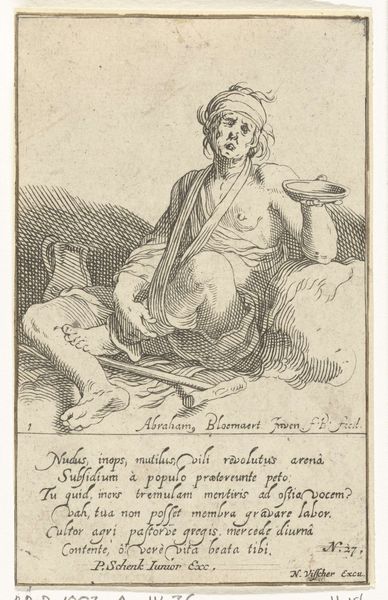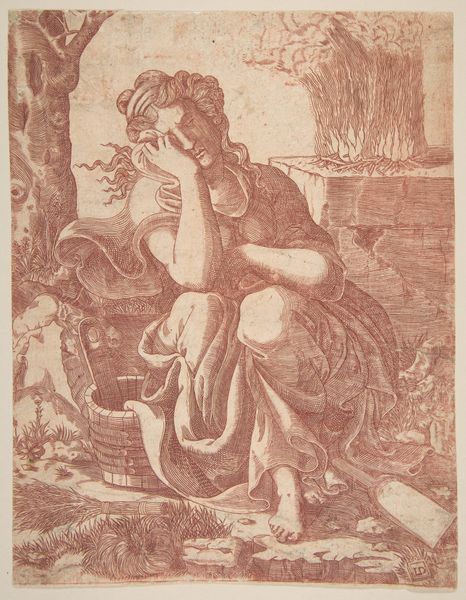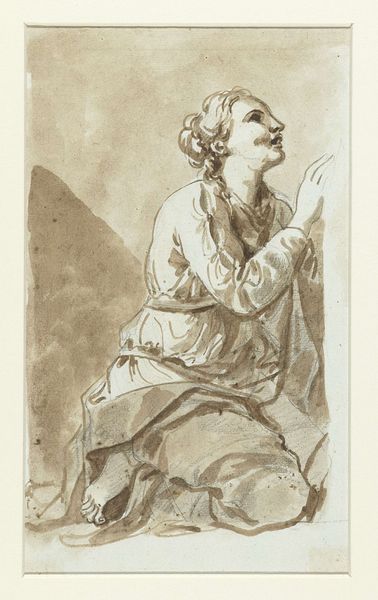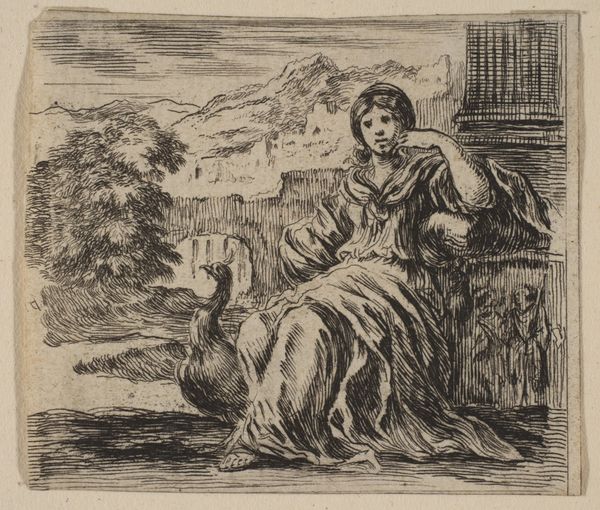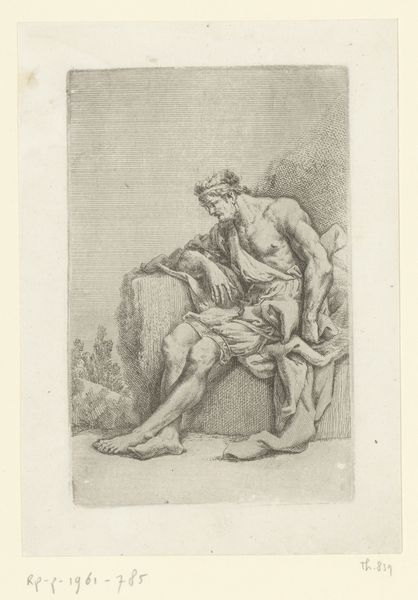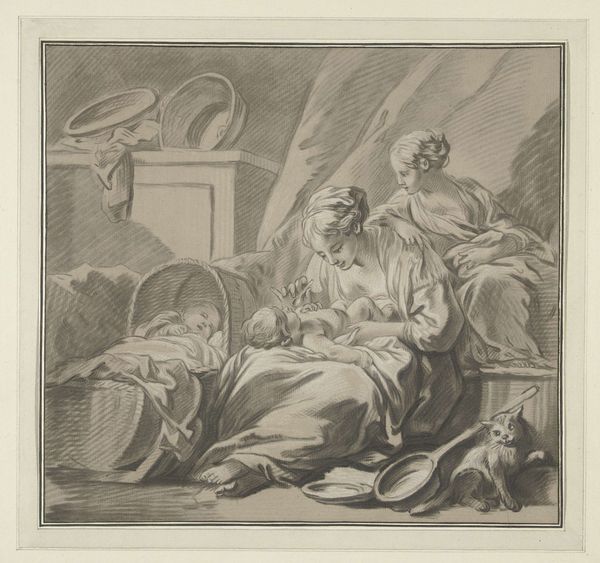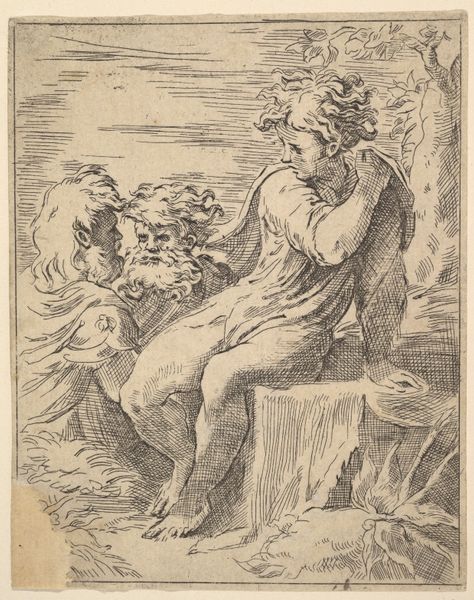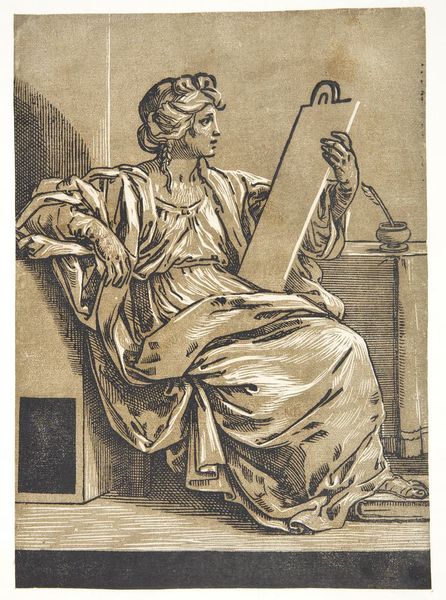
print, etching
#
portrait
#
narrative-art
#
baroque
# print
#
etching
#
figuration
#
genre-painting
Dimensions: height 129 mm, width 83 mm
Copyright: Rijks Museum: Open Domain
Editor: So, this is "Sitting Beggar with his Leg in a Sling" by Frederick Bloemaert, created after 1635. It's an etching. Immediately, the guy's expression, the bandage around his head – it’s pretty bleak. There’s also text underneath the image. I can read ‘Nudus, inops’ so definitely about being nude and poor. I’m wondering what this image really tells us. How do you interpret this work? Curator: Oh, this piece…it whispers of hard truths, doesn't it? That figure, etched in the harsh light of survival. To me, it's more than just a beggar; it's a commentary on vulnerability, a stark reminder of social inequalities etched with, dare I say, an unflinching yet delicate hand. That Latin text… adds another layer. Bloemaert invites us into a world of complex narratives of need, dependence, maybe even exploitation. Notice the carefully chosen details – the empty bowl, the precarious positioning. It evokes feelings of fragility. But what about the figure stands out for you, compositionally? Editor: I think it’s his eyes. He's staring right at the viewer. Like he’s challenging you. But the positioning... like you said. Curator: Exactly! That direct gaze challenges our preconceptions, forces us to confront uncomfortable realities. The Baroque period often loved dramatic, emotionally charged scenes, right? But I sense here, a restrained emotional intensity which lets the viewer think. Do you find that to be true? Editor: Yeah, now that you mention it, it’s not overly dramatic. More contemplative. Curator: It’s funny, isn't it? Something made centuries ago, using ink and metal, manages to jump across time. Thanks for walking through the history of Bloemaert and this compelling artwork, I felt really connected today. Editor: Thanks! I learned to go deeper than just my first impressions. Now, to look into Bloemaert himself.
Comments
No comments
Be the first to comment and join the conversation on the ultimate creative platform.
